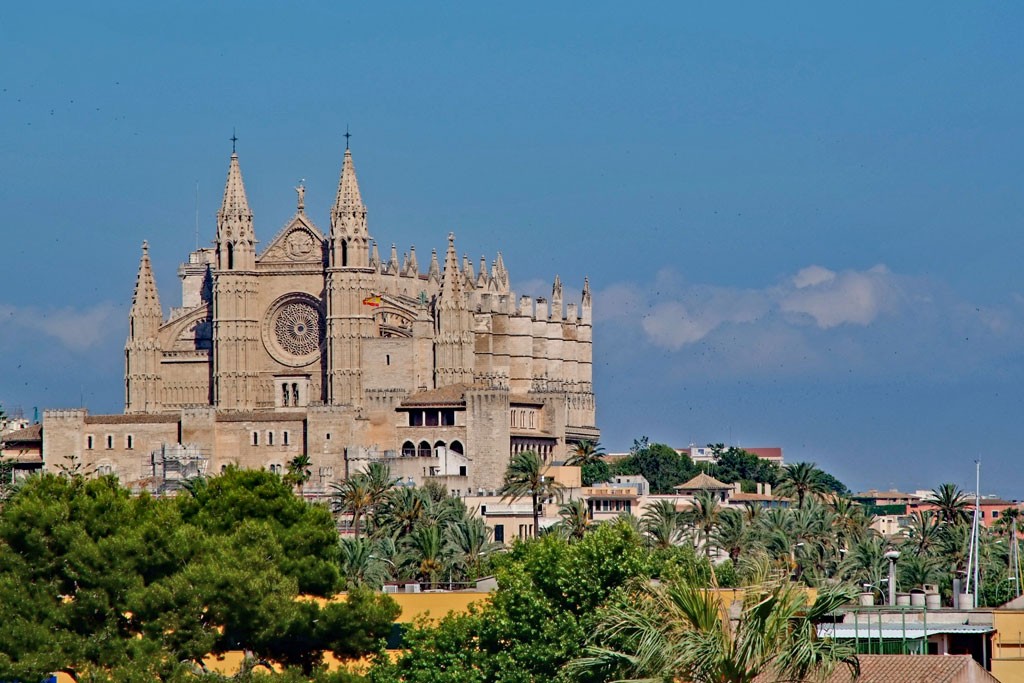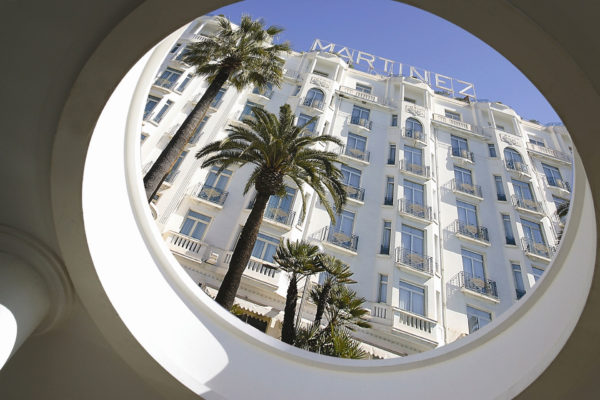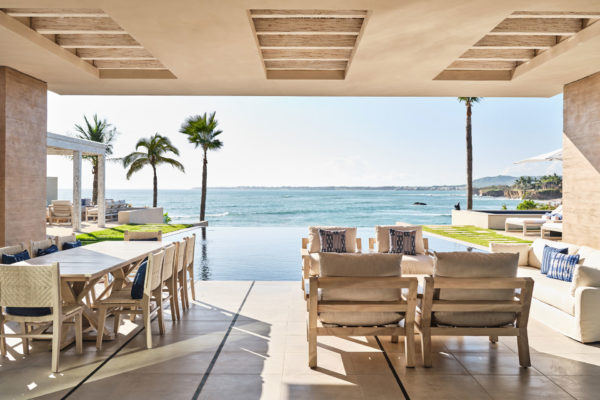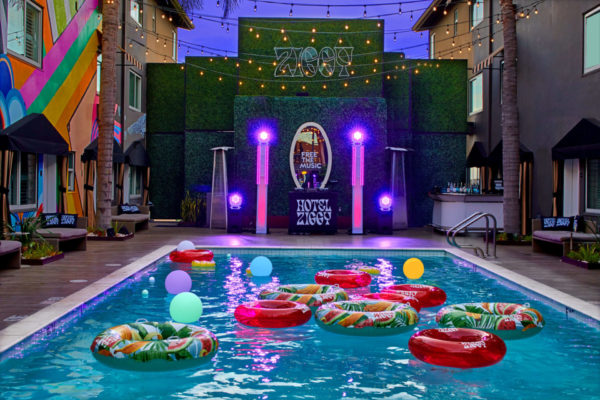The Weekender: Palma, Mallorca
By
1 year ago
It's time to book your next short-haul break and Palma has never been more appealing

Once synonymous with sun and sangria mass tourism (Magaluf is just along the coast), Palma has reinvented itself in little more than a decade as one of the most elegant destinations in Spain. Stretching for seven miles along a beautiful bay, with Roman, Byzantine and Moorish heritage, Palma is full of handsome buildings, smart streets, and major sights. Hot in summer and mild in winter, it’s a perfect year-round destination, now attracting wealthy visitors with its designer shops, high quality restaurants and boutique hotels. Anwer Bati finds it’s still possible to find reasonable prices and a sense of local life around the town.
Read the C&TH Guide to Responsible Tourism
The Weekender: Palma, Mallorca
Where To Stay In Palma
Of the numerous new boutique hotels which have sprung up in Palma in the last few years, four of the best have been opened by enterprising Barcelonan Miguel Conde aided by his architect wife, Cristina Marti. What’s special about them is that they’re all housed in restored historic buildings – all notably different in character and ambience, but all dedicated to sustainability. Also special are the dedicated, helpful staff and management teams.

Junior Suite, Can Cera
Can Cera
If you want to enjoy period atmosphere and imagine the life of a local grandee, try Can Cera – the first to open in 2011 – in a 17th Century former mansion behind an imposing entrance. It’s built around a cobbled central courtyard – with a grand marble staircase, stone arch and running fountain -which is partly open to the sky. The fourteen classically elegant and spacious rooms and suites, with original wooden doors, some with balconies, are all different: individually decorated, with antique furniture and modern art works. And there are several public salons to relax in. There’s also a small spa on the ground floor with a sauna, hammam and Jacuzzi; and a sun roof where you can enjoy a drink. In the evenings, cocktails on the first floor in the evenings, served by a mixologist from the local hot spot, Arlequin.

Calatrava
Calatrava
For a complete contrast in feel, there’s Calatrava, in a 19th Century building in a peaceful spot by the sea front near the cathedral. It’s one of the few hotels actually in Palma with a view of the bay. And where Can Cera is traditional, Calatrava is modern and casual with big loft-like rooms with bright designer furnishings, wood floors, ceramic bathrooms and terracotta coloured walls – on which are displayed black and white photos of the sea around Mallorca specially commissioned from local artists Jose Taltavull and Xim Izquierdo. Several of the rooms have large balconies to lounge on. Once again, there’s a small spa, but one of the hotel’s greatest draws is the rooftop restaurant and bar with stunning panoramic sea views. It’s also where breakfast is served.

Can Alomar
Can Alomar
Can Alomar is different again: chic and sophisticated, housed in a former palace, dating from the 17th Century, but this time in the very heart of the city on the corner of buzzy Paseo del Borne on the and Carrer de Sant Feliu, Palma’s most elegant streets, and the centre of luxury shopping. The sixteen rooms and suites, with plenty of light, are decorated in neutral hues with contemporary furniture from leading designers, marble bathrooms, thick rugs and curtains, and wall art supplied by the prestigious Galeria Pelaires. There’s a roof terrace, with views over the city, with a small pool and sun loungers. And there’s a massage and treatment room.

Sant Jaume
Sant Jaume
A short walk away in a side street, there is a completely different vibe at the slightly more conventional Sant Jaume hotel: bigger, with 36 rooms, and consciously focused on design, this time in a converted 18th Century mansion. Though you wouldn’t believe the age of the building when you enter the soaring atrium, where light pours in and picks out a spectacular 40 ft high installation by Mallorcan artist Robert Ferrer i Martorel. The rooms are beautifully stylish, with subtle colours and clean lines, and several have bathtubs, some free-standing. A couple of the suites also have terraces. As with the other hotels, there’s small spa and an equally petite fitness room; and the sun roof is the place to relax, and maybe use the plunge pool.
The rooms in all the hotels come with the facilities you would hope for, including coffee machines. And each hotel has a its own signature scent wafting through public areas. Breakfast is similar in all of them: a vibrant array cold cuts, cakes and fruit, with eggs cooked to order. A menu consisting of simple tapas and cold meat, fish and salads is available during the rest of the day. Incidentally, the company, IT Hotels, also has a similarly impressive offshoot, Can Auli in the picturesque town of Pollença in the north of the island.
Where To Eat In Palma
De Tokio a Lima
To literally rise above the hubbub of the busy designer shopping streets below, escape to Can Alomar’s terrace restaurant, De Tokio a Lima: it’s one of the best in town, with its exquisitely executed and mouth-watering Japanese, Peruvian, Spanish and Mediterranean inspired menu. Or have a drink on the hotel’s other terrace in of Palma’s most stylish bars. detokioalima.com
Vermuteria La Rosa
For tapas (tinned fish is a speciality) and tasty dishes of the day, try the casual and – though only opened ten years ago – decidedly retro Vermuteria La Rosa, with its yellow-tiled bar, and cheerful service.
Patron Lumares
Another place favoured by locals is Patron Lumares, with a large air-conditioned interior and a few tables on the pavement outside.
Es Fum
For a complete change of scene, go to the luxurious St Regis Mardavall resort, a little outside town, to sit on the terrace of Es Fum, with views of the sea and the resort’s lush gardens. Chef Miguel Navarro’s vibrant and colourful Michelin-starred food is genuinely exciting, featuring light, beautifully presented dishes bursting with flavour.
Flanigan
Also away from the bustle of central Palma is Flanigan at the glamorous Puerto Portals marina – serving Mediterranean cuisine, particularly fish and seafood. It’s a favourite with the Spanish Royal Family when they visit their nearby summer residence, the Marivent Palace (open to the public, incidentally).
Sights To See
You literally can’t miss the Cathedral, and it’s well worth entering this imposing landmark, with its exceptionally tall nave, rose windows and twenty chapels. Look out for characteristic changes made to the interior by Antoni Gaudi in the early 20th Century. Next door and almost as prominent is another highlight, the Almudaina Palace. Originally a Moorish fortress, it is now a military HQ and a royal residence with grand rooms and good views of the bay.
Nearby, in an imposing mansion, is the Juan March museum founded by one of Spain’s richest men, containing works by Dali, Miro, Picasso and Gris. A short walk away are the Banys Arabs (Arab baths), one of the few remaining intact pieces of Moorish architecture in the city, with their charming gardens.
Although it’s slightly out of the centre of town, don’t miss the Miro Museum, which displays many of the Catalan artist’s works. Miro lived on the estate, and his studio, recreated for visitors, is also there. Also worth visiting is Palma’s architecturally impressive new modern and contemporary art museum, Es Baluard by the old city walls. There is both a permanent collection and special exhibitions. The view from the terrace – where there is a good café – is one of the best in the city.
Things To Do
The beach is around eight miles from the city centre, so most of your time will be spent wandering around the city. It’s worth booking a walking tour, whether for food or sights. Do this through Corazón Travel.
There are also two hop-on-hop-off bus routes, one of which takes you to Bellver castle, a 14th century fortress which, as the name suggests, has superb views of the bay. It’s worth walking to Portixol, a former fishing village which now buzzes with bars and restaurants by the sea.
Palma hosts several major events, and one of the most prestigious is the Superyacht Cup (thesuperyachtcup.com), the biggest regatta of its type in Europe, in which mega sailing boats of up to 52 metres, costing tens of millions of pounds, compete every June.
What To Buy
Go to the shaded Passeig del Born for top international designer brands, as well as leading Spanish labels such as Zara. Just off Passeig Born is Rialto Living, in a converted cinema, a stylish mini-department store selling clothes, home items and accessories. The café is a popular meeting place for elegant expats. Nearby is Estillo Sant Feliu, which specialises in high quality local fabrics and ceramics. Also in the area is a branch of the Corte Ingles department store.
For food shops, go to the narrow streets around the Placa Cort. La Pajarita is one of the best. There are also several artisan shops in the centre, including the charming Industrial, where you will find handmade dolls and other toys.
Palma has two markets, the bigger of which is Mercat Olivar. There, apart from food stalls, you will find numerous places for a snack or a drink. The other is Santa Catalina market, in an old fishermen’s area, now a fashionable district.
BOOK IT
A double room with breakfast starts from £260 at Can Cera, £250 at Calatrava, £260 at Can Alomar, and £200 at Sant Jaume. itmallorcauniquespaces.com









